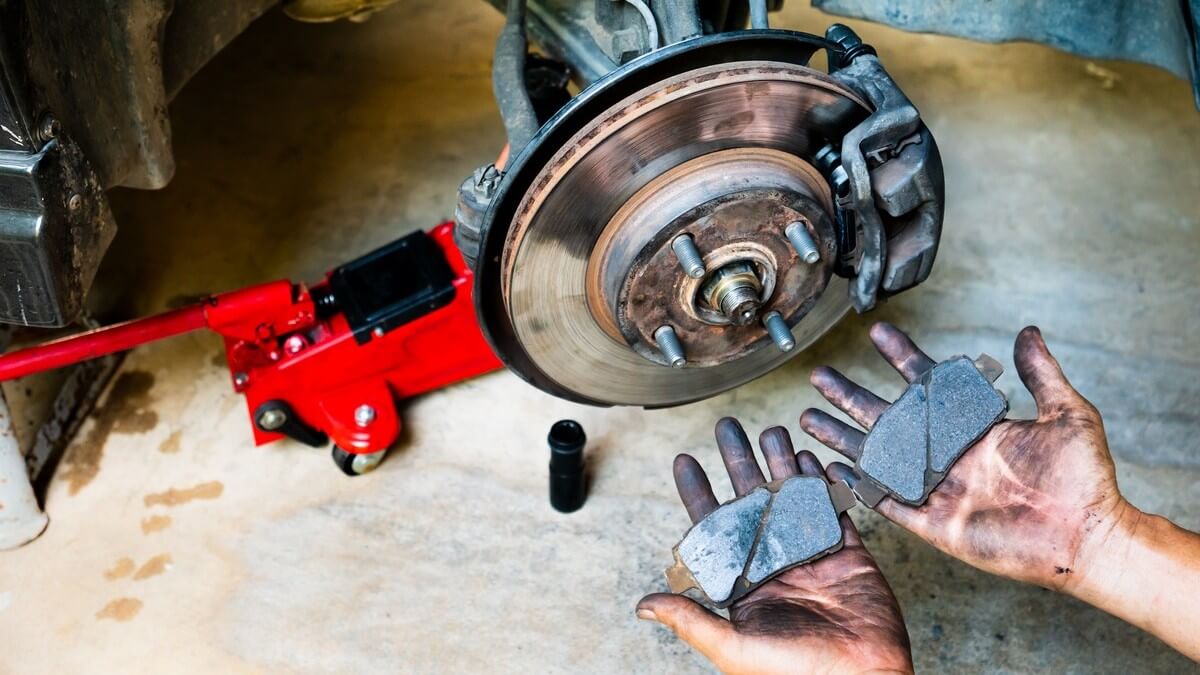Maintaining your vehicle’s brake system is crucial for ensuring safety on the road. One of the most critical components of this system is the brake pads. Knowing when to replace your brake pads can prevent accidents, save money on repairs, and keep your car running smoothly. This guide will help you understand the signs that indicate it’s time to replace your brake pads, the factors that affect their lifespan, and the steps involved in replacing them.
Understanding Brake Pads
Brake pads are a part of the disc brake system, which is commonly used in modern vehicles. They are made of friction material that presses against the brake rotor to slow down or stop the vehicle. Over time, this friction material wears down, reducing the effectiveness of the brakes.
Signs That It’s Time to Replace Your Brake Pads
- Squeaking or Squealing Noises: One of the first signs that your brake pads need attention is an audible squeaking or squealing noise when you apply the brakes. This noise is often caused by a wear indicator, a small metal tab that makes contact with the rotor when the pads are worn down.
- Grinding Sound: If you hear a grinding noise, it means the brake pads are completely worn out, and the metal backing plate is making contact with the rotor. This can cause significant damage to the rotor and should be addressed immediately.
- Reduced Brake Performance: If you notice that your vehicle takes longer to stop or the brakes feel less responsive, it could be a sign that the brake pads are worn out.
- Vibration When Braking: A vibrating or pulsating brake pedal can indicate that the brake pads are unevenly worn or that the rotors are warped.
- Brake Pad Warning Light: Many modern vehicles are equipped with a brake pad warning light on the dashboard. If this light comes on, it’s time to inspect your brake pads.
- Visual Inspection: You can also perform a visual inspection of your brake pads. If they appear thin (less than 1/4 inch), it’s time to replace them.
Factors Affecting Brake Pad Lifespan
The lifespan of brake pads can vary widely depending on several factors:
- Driving Habits: Aggressive driving, such as frequent hard braking, can wear out brake pads faster. Conversely, gentle driving can extend their lifespan.
- Type of Brake Pads: There are different types of brake pads, including organic, semi-metallic, and ceramic. Each type has its own characteristics and lifespan. For example, ceramic pads tend to last longer but are more expensive.
- Driving Conditions: Driving in heavy traffic or on mountainous terrain can cause brake pads to wear out more quickly due to frequent braking.
- Vehicle Type: The weight and type of vehicle also play a role. Larger vehicles, such as trucks and SUVs, typically wear out brake pads faster than smaller cars.
How Often Should You Replace Brake Pads?
On average, brake pads should be replaced every 25,000 to 65,000 miles. However, this range can vary based on the factors mentioned above. It’s essential to follow your vehicle manufacturer’s recommendations and have your brakes inspected regularly.
Steps to Replace Brake Pads
Replacing brake pads is a task that many car owners can do themselves with the right tools and knowledge. Here are the basic steps involved:
- Gather Tools and Materials: You’ll need a jack, jack stands, lug wrench, C-clamp, brake cleaner, and new brake pads.
- Lift the Vehicle: Use the jack to lift the vehicle and secure it with jack stands. Remove the wheels to access the brake components.
- Remove the Caliper: Locate the brake caliper and remove the bolts holding it in place. Carefully slide the caliper off the rotor and support it with a hanger or bungee cord to avoid putting stress on the brake line.
- Remove the Old Brake Pads: Take out the old brake pads from the caliper bracket. You may need to use a C-clamp to compress the caliper piston to make room for the new pads.
- Install the New Brake Pads: Place the new brake pads into the caliper bracket. Ensure they are properly aligned and seated.
- Reattach the Caliper: Slide the caliper back over the rotor and secure it with the bolts you removed earlier. Make sure everything is tightened to the manufacturer’s specifications.
- Reinstall the Wheels: Put the wheels back on and lower the vehicle. Tighten the lug nuts in a star pattern to ensure even pressure.
- Test the Brakes: Before driving, pump the brake pedal a few times to ensure the pads are properly seated and the brakes are functioning correctly.
Conclusion
Regularly inspecting and replacing your brake pads is essential for maintaining your vehicle’s safety and performance. By paying attention to the signs of wear and understanding the factors that affect their lifespan, you can ensure that your brakes are always in top condition. Whether you choose to replace the brake pads yourself or take your vehicle to a professional, staying proactive about brake maintenance will help you avoid costly repairs and keep you safe on the road.

